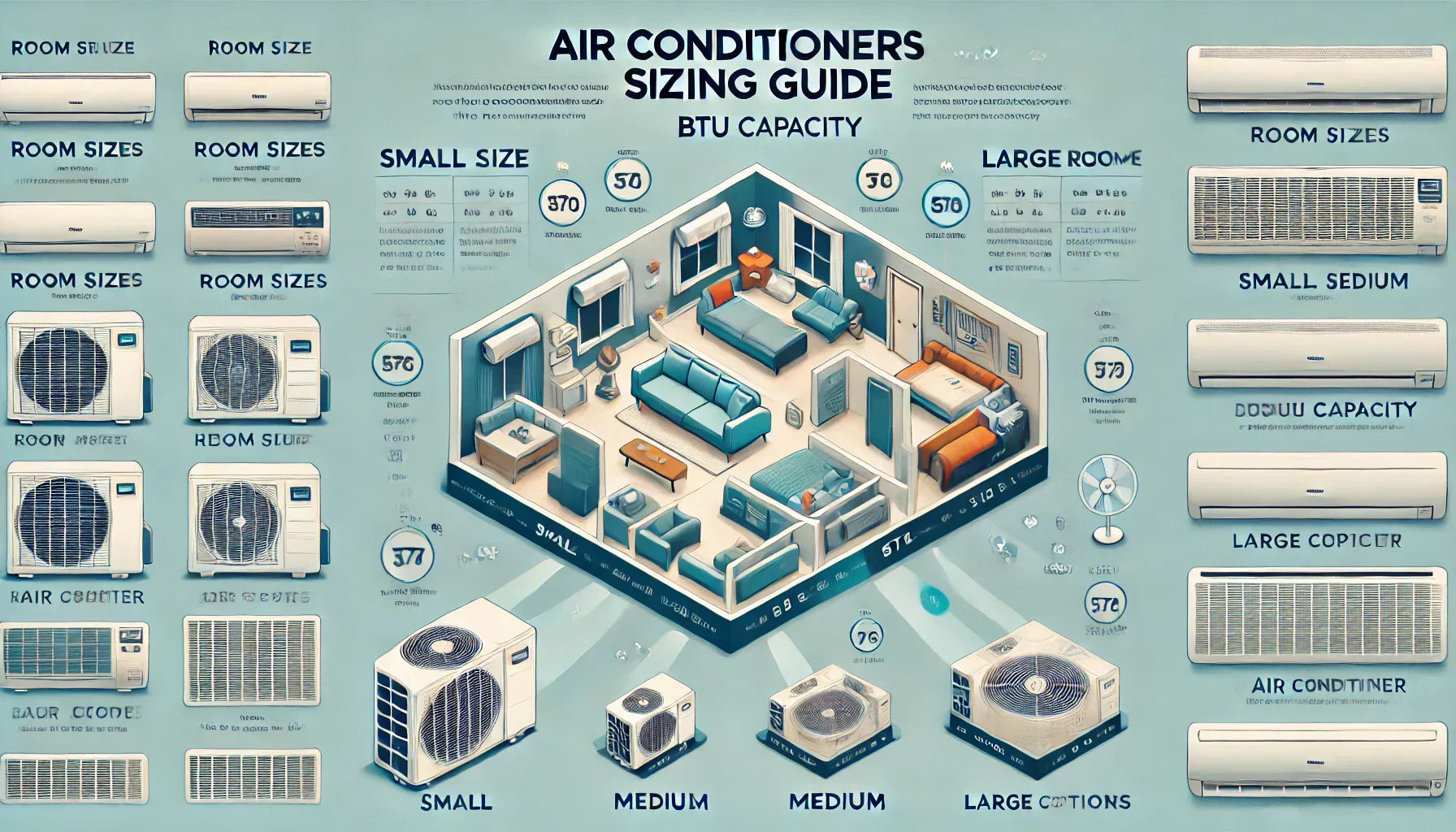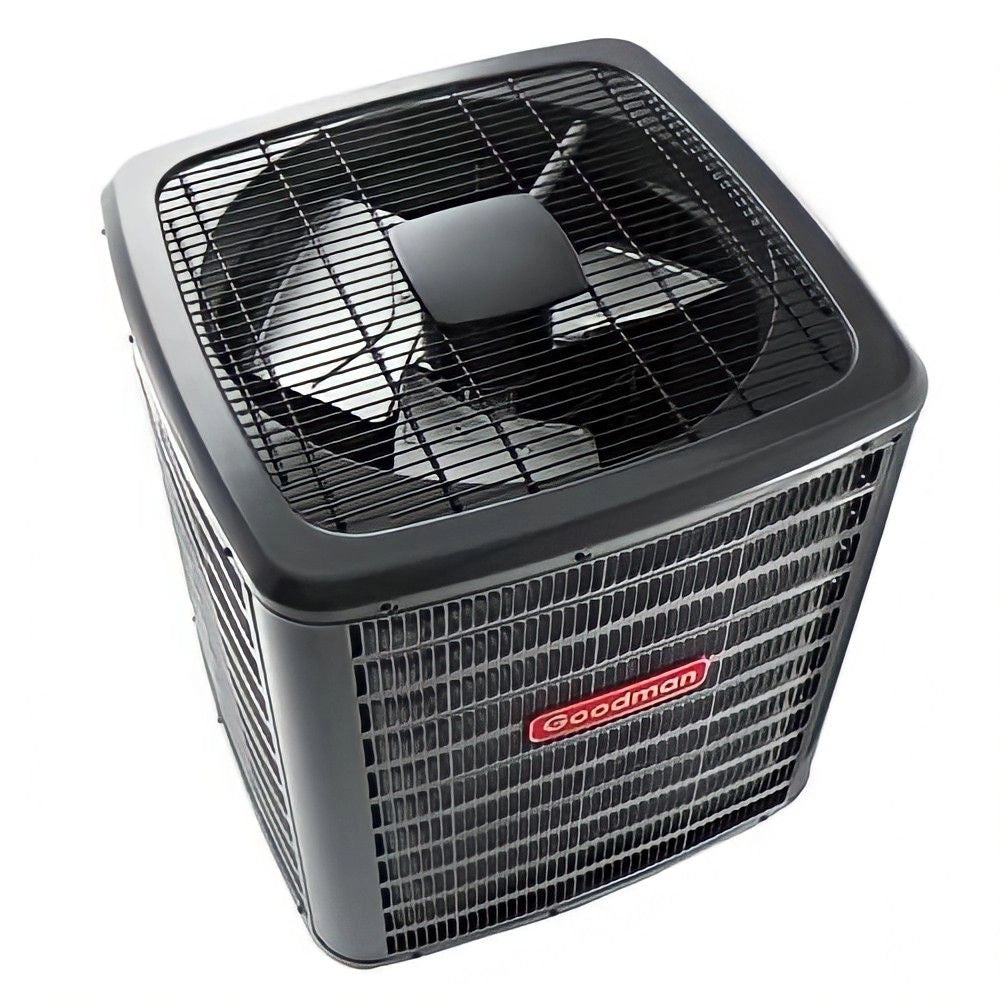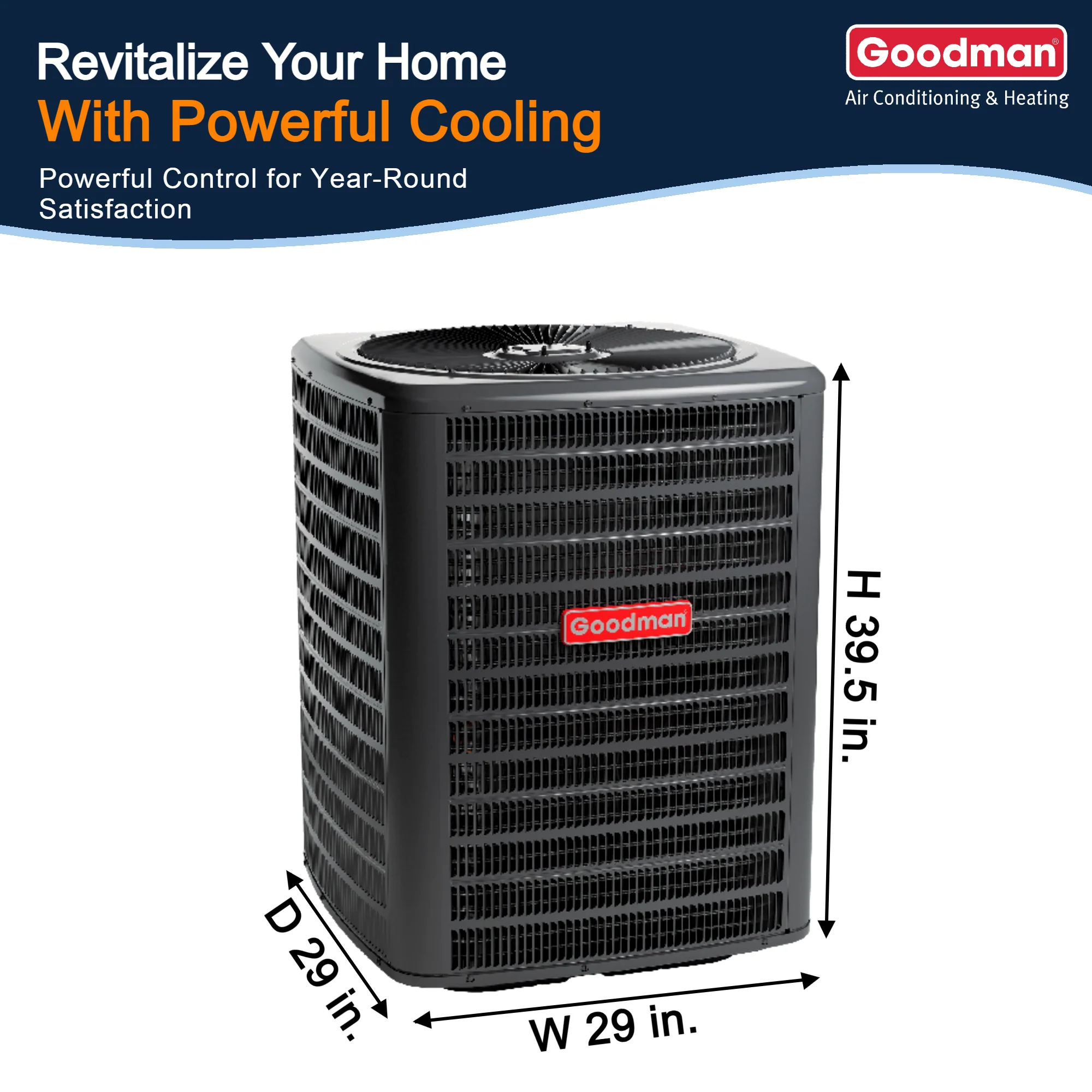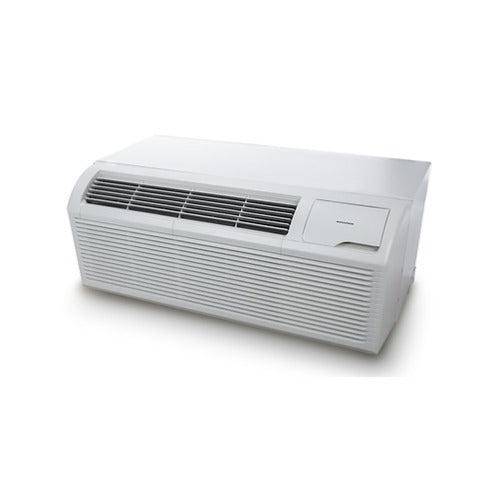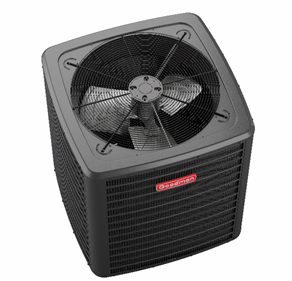Air Conditioner Sizing Guide
How to Choose the Right AC Size for Your Home
Selecting the correct air conditioner size is crucial for energy efficiency, home comfort, and cost savings. An improperly sized unit can lead to high energy bills, inefficient cooling, and increased wear and tear.
Factors to Consider When Sizing an AC Unit:
-
Square Footage of Your Home – Larger homes require higher BTU capacity.
-
Insulation & Home Sealing – Poorly insulated homes need more cooling power.
-
Local Climate Conditions – Hotter regions require higher capacity air conditioners.
-
Number of Windows & Sun Exposure – More sunlight increases indoor temperature.
-
Number of Occupants & Appliances – More people and appliances generate additional heat.
-
Ceiling Height & Room Volume – High ceilings require additional cooling power.
For an easy way to determine the ideal AC size, use this HVAC Load Calculator.
BTU & Tonnage Explained: What You Need to Know
BTU (British Thermal Unit) is a standard measurement of cooling capacity. The higher the BTU, the more cooling power an AC unit has.
General BTU Sizing Guide Based on Room Size:
| Room Size (sq. ft.) | Recommended BTUs |
|---|---|
| Up to 150 sq. ft. | 5,000 – 6,000 BTU |
| 150 – 350 sq. ft. | 6,000 – 8,000 BTU |
| 350 – 550 sq. ft. | 8,000 – 12,000 BTU |
| 550 – 1,000 sq. ft. | 12,000 – 18,000 BTU |
| 1,000 – 1,500 sq. ft. | 18,000 – 24,000 BTU |
| 1,500+ sq. ft. | 24,000+ BTU (2+ Tons) |
A ton in HVAC terms is equal to 12,000 BTUs per hour. Most residential air conditioners range from 1.5 to 5 tons.
For a professional assessment of air conditioner tonnage requirements, refer to ASHRAE’s HVAC Sizing Guide.
The Risks of Oversized & Undersized AC Units
Problems with an Oversized AC Unit:
-
Short Cycling: The AC shuts off quickly, failing to dehumidify properly.
-
Uneven Cooling: Some rooms may feel too cold while others remain warm.
-
Higher Energy Costs: Frequent start/stop cycles increase energy consumption.
-
Increased Wear & Tear: Leads to premature compressor failure and costly repairs.
Problems with an Undersized AC Unit:
-
Constant Operation: The unit runs longer, struggling to reach the set temperature.
-
Higher Electricity Bills: Continuous operation results in excessive energy use.
-
Inadequate Cooling: Home remains uncomfortably warm during peak heat.
To ensure proper sizing, consult a certified HVAC professional via ACCA’s Contractor Directory.
Importance of Proper HVAC Load Calculation
A Manual J Load Calculation is the industry standard for determining the exact air conditioning capacity needed for a home. This professional calculation considers factors like:
-
Building materials and insulation quality
-
Air leakage and ventilation levels
-
Ductwork efficiency and design
-
Heat generated by household appliances
Using a precise load calculation instead of estimates ensures optimal energy efficiency and home comfort. For a detailed guide, visit HVAC Load Calculation by ACCA.
Final Thoughts
Selecting the right-sized air conditioner ensures optimal cooling efficiency, lower electricity bills, and a longer lifespan for your AC unit. Use a professional HVAC load calculation or BTU sizing chart to determine the best unit for your home.
For expert recommendations on energy-efficient air conditioning systems, visit Energy Star’s Official Guide.

